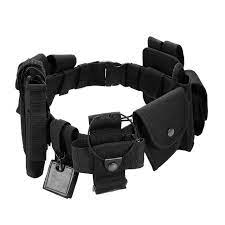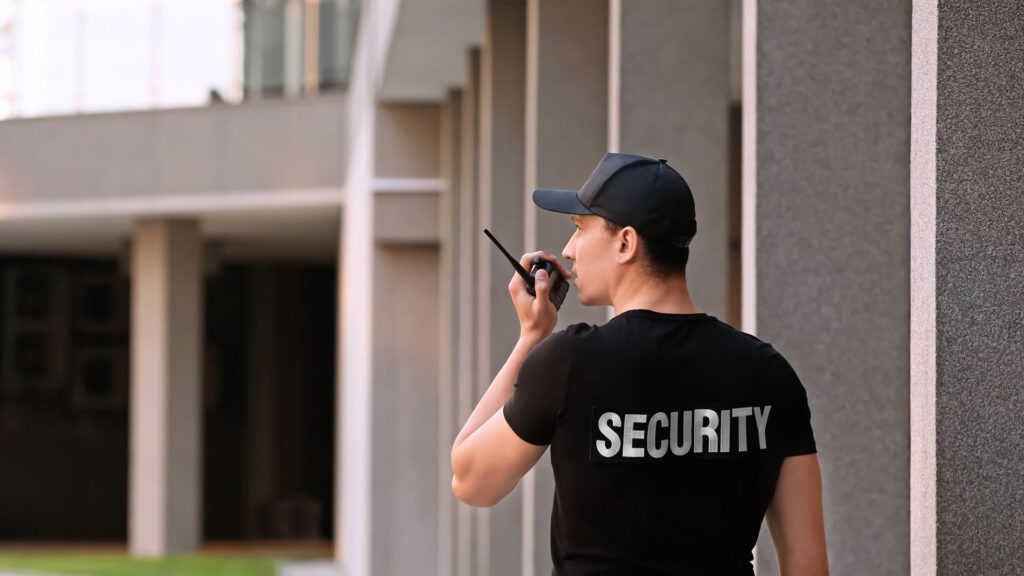Equipment for public facility guards
**Equipment and Devices for Security Guards of Public and Government Facilities**
**Public Facilities**
Public facilities are those owned and managed by the state or government, forming part of the country’s infrastructure. These facilities aim to meet the needs of society and provide public services to citizens.
**Securing Public Facilities**
Public facilities typically engage in administrative or governmental service activities. Examples include ministries and departments such as the Ministry of Defense, Interior, Finance, government schools, health centers, government hospitals, and more.
**Types of Public Facilities**
Public facilities encompass a wide range of sectors and industries, including:
– **Healthcare Facilities:** These include hospitals, clinics, and health centers that provide healthcare to citizens.
– **Educational Institutions:** These comprise schools, universities, and institutes that offer education and training.
– **Transportation Facilities:** These include roads, bridges, airports, ports, railways, and public transportation networks, aiming to facilitate the movement of people and goods.
– **Infrastructure Facilities:** These cover water and sewage networks, electricity, gas, and communication systems, essential for providing basic services to society.
– **Cultural and Recreational Facilities:** These include museums, libraries, theaters, parks, and sports fields, designed to enhance culture and provide leisure and recreational spaces.
– **Military Facilities:** These include military bases, warehouses, and training centers belonging to the armed forces, aimed at ensuring the security and defense of the country.
– **Judicial Facilities:** These encompass courts, supreme courts, and public prosecutors, aiming to deliver justice and enforce the law.
– **Administrative Facilities:** These include central and local government buildings and various government departments, responsible for implementing government policies and providing public services.
– **Social Facilities:** These include care homes and social institutions that offer support and assistance to vulnerable and needy groups in society, such as orphanages and homes for the elderly.
– **Agricultural Facilities:** These comprise government farms, agricultural research centers, and government nurseries, working to develop agriculture and provide food resources to society.
– **Environmental Facilities:** These include nature reserves, zoos, waste treatment plants, and renewable energy stations, aiming to protect the environment and preserve natural resources.
– **Cultural and Heritage Facilities:** These encompass historical sites, monuments, museums, and government libraries that preserve cultural heritage and promote cultural awareness.
**How Are Facilities Secured?**
Facility security involves both physical and procedural elements. A good security approach should consider both. Facility security should be treated like any risk assessment process: analyzing threats, assessing how they endanger personnel and resources, and implementing measures that reduce the likelihood of threats and exposure to danger.
**Securing public facilities is crucial to ensuring their safety and protecting the employees and public who use these facilities. Several methods for securing facilities include:**
1. **Guarding and Human Security:** Trained security guards are employed to secure public facilities, strategically positioned within the facility to monitor and respond to any threats or sabotage.
2. **Surveillance Systems and Cameras:** Installing a closed-circuit television (CCTV) system and cameras in sensitive areas within the facility for continuous monitoring and documentation of events.
3. **Access Control Systems:** Using access control systems like access cards or electronic locks to control entry to the facility and restrict access to specific areas.
4. **Employee Training:** Providing appropriate safety and security training for employees, including educating them on proper selection procedures and reporting any suspicious or unusual activity.
5. **Emergency Procedures:** Establishing specific emergency plans to handle potential emergencies such as fires or security threats, including evacuation procedures and providing alarm and alert systems.
6. **Collaboration with Security Agencies:** Collaborating with the police and local security agencies to enhance security, provide support when needed, and exchange information about potential security threats.
**Equipment for Public Facility Security Guards**
Security guards use a variety of equipment and devices to enhance their role in securing a facility. Some examples include:
– **Protective Gear and Personal Equipment:** This includes protective vests, helmets, gloves, safety glasses, and safety boots. These are designed to protect the guard from personal harm while performing duties and may be bulletproof and stab-resistant.
– **Headsets and Communication Devices:** These devices, whether Bluetooth headsets or wireless communication devices, aid in effective communication among guards, facilitating coordinated efforts and quick response to incidents or threats.
– **Detection and Screening Devices:** These are used to detect any foreign or suspicious objects, such as metal detectors and portable X-ray machines, helping prevent the entry of prohibited or dangerous items into the facility.
– **Cameras and Surveillance Systems:** CCTV systems and cameras monitor activities inside and around the facility. These devices can record events and provide strong evidence if needed for investigations.
– **Alarm and Early Warning Systems:** These include burglar alarms, fire alarms, and early warning devices to alert guards and employees to potential threats and activate a quick response.
– **Powerful Lighting Devices:** These include flashlights and floodlights to provide strong lighting in dark areas or focus light on specific parts of the facility.
– **Helmets or Hard Hats:** Used to protect the head from potential injuries during emergency interventions or security operations.
– **Gloves:** Used to protect hands from injuries and hazardous materials. They should be strong yet flexible to allow for free movement.
– **Protective Footwear:** Designed to protect feet from cuts or slips. They should be comfortable, durable, and may feature slip-resistant soles.
– **Flashlights:** Used to illuminate dark areas and focus light on suspicious regions.
– **Personal Defense Tools:** Such as collapsible batons or pepper spray, used for self-defense in case of an attack or threat.
– **Personal Protection Devices:** Such as pepper spray or a stun gun (taser), can be used as means of self-defense in cases of direct attack or threat.
– **Transportation Tools:** Personal security guards may require fast and efficient means of transportation to ensure the safety of the protected person, such as security vehicles or motorcycles.
**What Factors Should Be Considered When Choosing Protective Equipment for Guards?**
When selecting protective equipment for guards, several factors need to be considered, including:
– **Type of Task and Environment:** The type of task the guard performs and the nature of the environment they work in should be considered. For example, if the task involves dealing with hazardous materials, it may be necessary to use protective equipment like chemical suits or respirators.
– **Required Level of Protection:** The required level of protection should be determined based on risk assessment and the nature of potential threats. Some tasks may require high-level protective equipment, like bulletproof vests, while basic protection may suffice in other cases.
– **Comfort and Fit:** The equipment should be comfortable and well-fitted to allow guards to perform their duties efficiently. The equipment should fit body size and be adjustable to suit different sizes and shapes.
– **Quality and Durability of Equipment:** High-quality and durable equipment that can withstand daily use and harsh conditions should be selected. The equipment must retain its functionality and protect guards for a long time.
– **Compliance with Standards and Regulations:** The equipment should comply with industry standards and safety regulations. This can be ensured by checking quality certifications and compliance.
– **Training and Proper Use:** Guards should receive the necessary training to use the equipment correctly and effectively. The equipment should be easy to use and require minimal time to learn and adapt.
In general, protective equipment should be selected according to the needs and conditions of each facility and the guard’s task. It is advisable to collaborate with safety and security specialists to obtain professional consultation and guidance in selecting the appropriate equipment.



